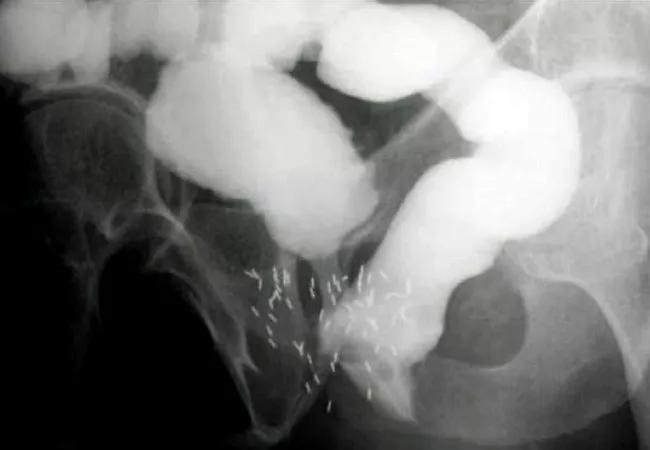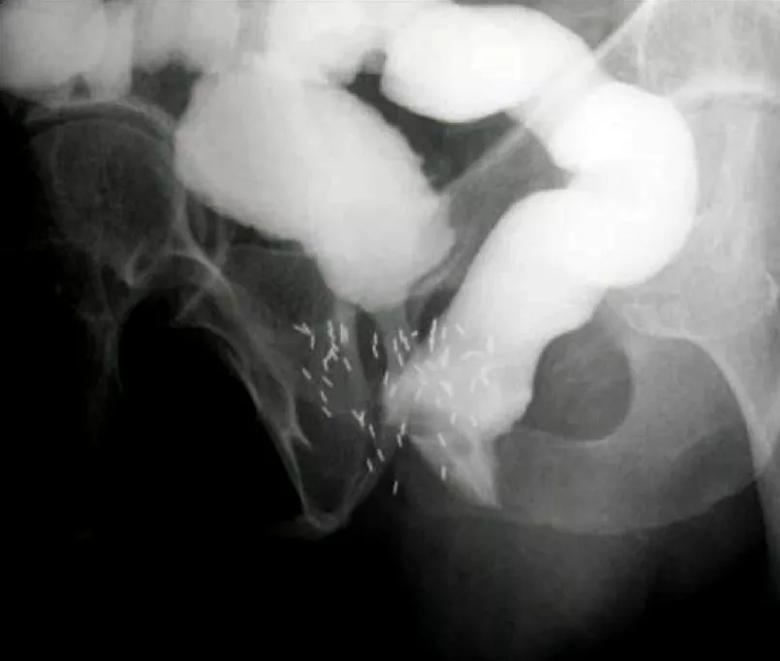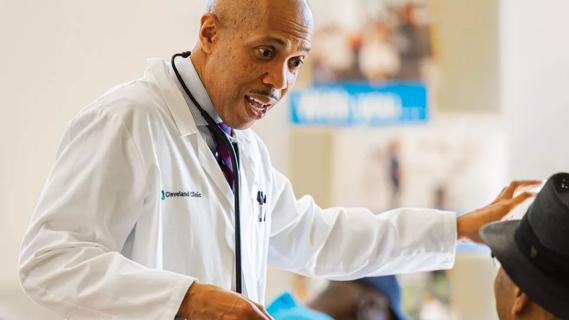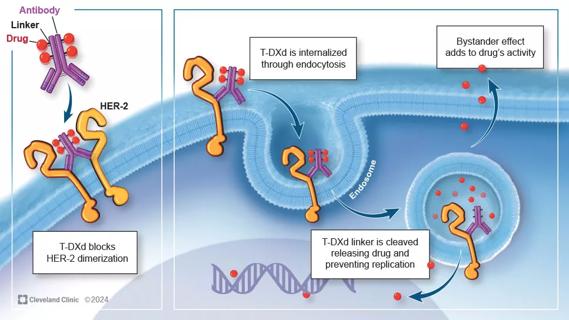Evidence shows that good communication is key

When patients experience rectourethral fistula (RUF) after prostate cancer treatment, communicating about potential procedures and setting clear treatment expectations are critical steps to achieve overall patient satisfaction, according to results of a study by urologists at Cleveland Clinic Glickman Urological & Kidney Institute.
Advertisement
Cleveland Clinic is a non-profit academic medical center. Advertising on our site helps support our mission. We do not endorse non-Cleveland Clinic products or services. Policy
The research was conducted by Hadley Wood, MD; Kenneth Angermeier, MD; and Amanda Chi, MD. Dr. Chi presented results of theirs research at the American Urological Association 2017 meeting in Boston.
The study encompassed a review of 103 patients with RUF whose treatments and outcomes were followed for an average of nearly three years (31 months). Eighty percent of patients ultimately underwent surgery for RUF at Cleveland Clinic, and of that group, nearly two-thirds (60 percent) ended up with no abdominal stoma. Long-term urostomy alone was required as a component of the successful management of the RUF in 17 percent of this patient group, and colostomy or ileostomy in 15 percent. A low number of patients (9 percent) were ultimately managed with two stomas.
Patient evaluation is fairly standard, however treatment options vary and may require shifting plans and flexibility, according to Dr. Angermeier, which can leave patients wondering whether they can be fully reconstructed or will require one or two stomas in the future.

Contrast study demonstrating rectourethral fistula. Contrast outlines bladder and bowel, fistula between urethra and rectum, as well as brachytherapy seeds from prostate cancer treatment.
“A thorough discussion of treatment plans and setting realistic expectations helps patients remain content with their outcomes,” Dr. Angermeier says. “We explain that repairing a rectourethral fistula requires a long and multi-step process that consists of fecal diversion, subsequent evaluation and surgical intervention, and ultimately stoma reversal.” Patient satisfaction is higher when appropriate expectations are outlined at the initial visit.
Advertisement
For complex fistulas, Dr. Angermeier usually begins treatment by diverting the fecal stream for at least four months, after which patients are evaluated with cystoscopy and proctoscopy under anesthesia to determine whether the fistula can be repaired.
After evaluation, if both the urinary tract and rectum appear amenable to repair, physicians will recommend patients undergo repair with the ultimate goal of no stoma. Alternatively, findings may reveal that patients need at least one stoma, usually because either the rectum or urinary tract do not appear healthy enough to be repaired. Much less frequently, patients are recommended for two stomas because of extensive tissue destruction.
Patients who underwent focal prostate cancer treatments, including brachytherapy, high-intensity focused ultrasound (HIFU), cryoablation, etc., had a higher frequency of requiring at least one stoma, as opposed to those who underwent external beam radiation for rectal or prostate cancer with or without surgery, the study reported.
“In the majority of patients, reconstruction of both systems is feasible, and it is rare not to be able to repair at least one system,” Dr. Angermeier notes. “Patients are evaluated about six months postoperatively to confirm healing and that bowel continuity can be restored. At any point along the way, re-evaluation may lead to a change in the initial plan.”
RUF represents a painful and uncomfortable condition with a varying etiologies that arise in approximately 0.5 percent of patients after treatment for prostate cancer, notably radiation and prostatectomy.
Advertisement
In this condition, a fistula opens between the rectum and urethra, resulting in a range of symptoms, including urinary tract infection, sepsis, air bubbles in urine, feces in urine, passage of urine through the rectum, and others.
Because of its relative rarity and the variable nature of fistulas, RUF management remains a highly individualized proposition with a paucity of consensus on optimal techniques.
Dr. Angermeier concludes, “While the rate of RUF resolution is high, we feel that patients should be carefully counseled and carefully selected for optimal surgical management.”
Former Fellow John Lacy, MD, and medical student and Research Fellow Shree Agrawal, BS, also contributed to this research.
Advertisement
Advertisement

First-of-its-kind research investigates the viability of standard screening to reduce the burden of late-stage cancer diagnoses

Global R&D efforts expanding first-line and relapse therapy options for patients

Study demonstrates ability to reduce patients’ reliance on phlebotomies to stabilize hematocrit levels

A case study on the value of access to novel therapies through clinical trials

Findings highlight an association between obesity and an increased incidence of moderate-severe disease

Cleveland Clinic Cancer Institute takes multi-faceted approach to increasing clinical trial access 23456

Key learnings from DESTINY trials

Overall survival in patients treated since 2008 is nearly 20% higher than in earlier patients